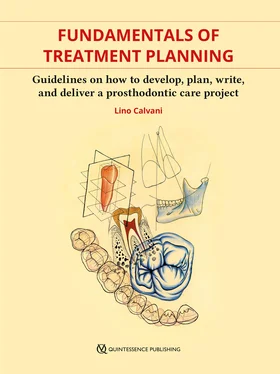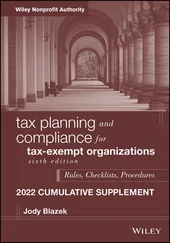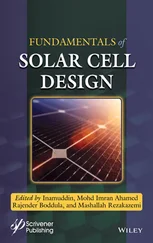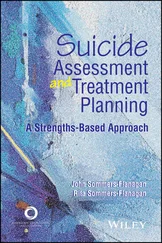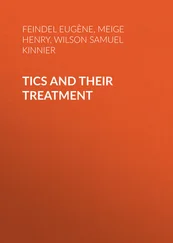13.Milgrom P, Weinstein P, Getz T. Treating Fearful Dental Patients. A Patient Management Handbook. Seattle: University of Washington, 1995
14.Oxford Dictionary. Oxford English Dictionary. https://en.oxforddictionaries.com/. Accessed 20 March 2019.
15.Palmer R, Palmer P, Howe L. Complications and maintenance. Br Dent J 1999;187:653–658.
16.Philips Z, Ginnelly L, Sculpher M, et al. Review of guidelines for good practice in decision-analytic modelling in health technology assessment. Health Technol Assess 2004;8:1–158.
17.Vollmann J. Mental competence and informed consent. Clinical practice and ethical analysis [in German]. Nervenarzt 2000;71:709–714.
18.Whyman RA, Rose D. Informed consent for people with diminished capacity to consent. N Z Dent J 2001;97: 137–139.
19.Wilson WH. Practical application of oral physiology. J Prosthet Dent 1956;6:1:53.
20.Barsh LI. Dental Treatment Planning for the Adult Patient. Philadelphia: WB Saunders, 1981.
21.Brehm TW. Diagnosis and treatment planning for fixed prosthodontics. J Prosthet Dent 1973;30:876–881.
22.Cohen LA. Integrating treatment procedures in occlusorehabilitation. J Prosthet Dent 1957;7:511.
23.Gill JR. Treatment planning for mouth rehabilitation. J Prosthet Dent 1952;2:230–245.
24.Goldberg R. Medical Malpractice and Compensation in the UK. Chicago-Kent Law Review. Symposium on Medical Malpractice and Compensation in Global Perspective. Part II, 2011;87:131–161.
25.Hall WB, Robert WE, LaBarre EE. Decision making in dental treatment planning. St. Louis: Mosby-Year Book, 1994.
26.Jacobson A, Sadowsky PL. A visualized treatment objective. J Clin Orthod 1980;14:554–571.
27.Miller LL. Lecture Series. Presented at Tufts University School of Dental Medicine, 1989–1991.
28.Newton T. Involving the ‘consumer’ in the evaluation of dental care: a philosophy in search of data. Br Dent J 2001;191:650–653.
29.Schwabel ST. Informed consent: medical, legal, and ethical implications. Physician Assist 1986;10:108–110, 113–115.
30.Stauch MS. Medical Malpractice and Compensation in Germany. Chicago-Kent Law Rev 2011;86:1139–1168.
31.Bolender CL, Swoope CC, Smith DE. The Cornell Medical Index as a prognostic aid for complete denture patients. J Prosthet Dent 1969;22:1:20–29.
32.Ebel HE, Adisman IK, Bolender CL, Preston J, Ebel H; Principles, Concepts, and Practices Committee. Principles, concepts, and practices in prosthodontics – 1982. The Academy of Denture Prosthetics. J Prosthet Dent 1982;48:467–484.
33.Bain CA. Treatment planning in general dental practice: case presentation and communicating with the patient. Dent Update 2004;31:72–76, 78–80, 82.
34.Greening P. Capacity, Consent and Dentistry – Who Decides and How Do They Do It? Prim Dent J 2015;4:67–69.
35.Mann AW. Examination, diagnosis, and treatment planning in occlusal rehabilitation. J Prosthet Dent 1967; 17:1:73–78.
36.Zitzmann NU, Krastl G, Hecker H, Walter C, Waltimo T, Weiger R. Strategic considerations in treatment planning: deciding when to treat, extract, or replace a questionable tooth. J Prosthet Dent 2010;104:80–91.
37.Barber JA, Thompson SG. Analysis and interpretation of cost data in randomised controlled trials: review of published studies. BMJ 1998;317:1195–1200.
38.Graves N, Walker D, Raine R, Hutchings A, Roberts JA. Cost data for individual patients included in clinical studies: no amount of statistical analysis can compensate for inadequate costing methods. Health Econ 2002;11:735–739.
39.Schweitzer JM. A conservative approach to oral rehabilitation. J Prosthet Dent 1961;11:119–123.
40.Burris S. Law and ethics and the decision to treat. In: Glick M (ed). Dental Management of Patient with HIV. Chicago: Quintessence, 1994;25–50.
41.Adeyemi AT, Kosoko JO, Ifesanya JU. Dentists’ knowledge and attitude towards informed consent taking in a Nigerian teaching hospital. Odontostomatol Trop 2011;34:5–10.
42.Bal BS. An introduction to medical malpractice in the United States. Clin Orthop Relat Res 2009;467:339–347.
43.Braly BV. Occlusal analysis and treatment planning for restorative dentistry. J Prosthet Dent 1972;27:2:168–171.
44.Choctaw WT. Avoiding Medical Malpractice: A Physician’s Guide to the Law. Berlin: Springer Science and Business Media, 2008:1–17.
45.CNA Dental Professional Liability, 2016 (Claim Report).
46.Kakar H, Gambhir RS, Singh S, Kaur A, Nanda T. Informed consent: corner stone in ethical medical and dental practice. J Family Med Prim Care 2014;3:68–71.
47.Lal S. Consent in dentistry. Pac Health Dialog 2003; 10:102–105.
48.McCabe MS. The ethical foundation of informed consent in clinical research. Semin Oncol Nurs 1999;15:76–80.
49.Pruden WH 2nd. Problems in oral re-rehabilitations. J Prosthet Dent 1973;30:4:558–559.
50.Sculpher MJ, Pang FS, Manca A, et al. Generalisability in economic evaluation studies in healthcare: a review and case studies. Health Technol Assess 2004;8:191–192.
51.Chate RA. An audit of the level of knowledge and understanding of informed consent amongst consultant orthodontists in England, Wales and Northern Ireland. Br Dent J 2008;205:665–673.
52.Hein IM, De Vries MC, Troost PW, Meynen G, Van Goudoever JB, Lindauer RJ. Informed consent instead of assent is appropriate in children from the age of twelve: Policy implications of new findings on children’s competence to consent to clinical research. BMC Med Ethics 2015;16:1:76.
53.Holden AC, Holden NL. How many of our patients can really give consent? A perspective on the relevance of the Mental Capacity Act to dentistry. Dent Update 2014;41:46–48.
54.Medical Legal Handbook for Physicians in Canada. Version 8.2. Ottawa: Canadian Medical Protective Association, 2016;3–15.
55.Morris RB. Principles of Dental Treatment Planning. Philadelphia: Lea & Febinger, 1983.
56.Stuart CE, Stallard H. Principles involved in restoring occlusion to natural teeth. J Prosthet Dent 1960;10:304.
57.Martone AL. The value of “I don’t know”. J Prosthet Dent 1957;7:4:541.
58.Regan LJ. The dentist and malpractice. J Prosthet Dent 1956;6:259.
59.Dimond B. The Mental Capacity Act 2005 and decision-making: advance decisions. Br J Nurs 2008;17: 44–46.
60.Ackerman JL. Bioethics and informed consent: applications to risk management in orthodontics. Presentation made to the Annual Meeting of the American Association of Orthodontics, Toronto, 1993.
61.Graziele Rodrigues L, De Souza JB, De Torres EM, Ferreira Silva R. Screening the use of informed consent forms prior to procedures involving operative dentistry: ethical aspects. J Dent Res Dent Clin Dent Prospects. 2017;11:66–70.
62.Bogdan J. Medical Malpractice in Sweden and New Zealand: Should their systems be replicated here? New York: Center for Justice and Democracy 2011;21:1–9.
CHAPTER THREE
Prosthodontic tools for treatment planning
How prosthodontists can help their patients
From the start of its existence in the USA at the beginning of the last century, the specialty of dental prosthodontics has involved the study of the art and science of restoring broken or decayed teeth and mouths in various states of edentulism. Much research as well as clinical and laboratory experience and verifiable procedures have resulted in the publication of numerous scientific articles, books, manuals, photographs, films, webinars, and online lectures on the topic of prosthodontics.
The Glossary of Prosthodontic Terms, an important and useful resource currently available as a free download from the Academy of Prosthodontics website, was created to define words and concepts necessary to clarify and share a common prosthodontic terminology for the practice and scientific reporting of the specialty. 1- 3
Читать дальше
